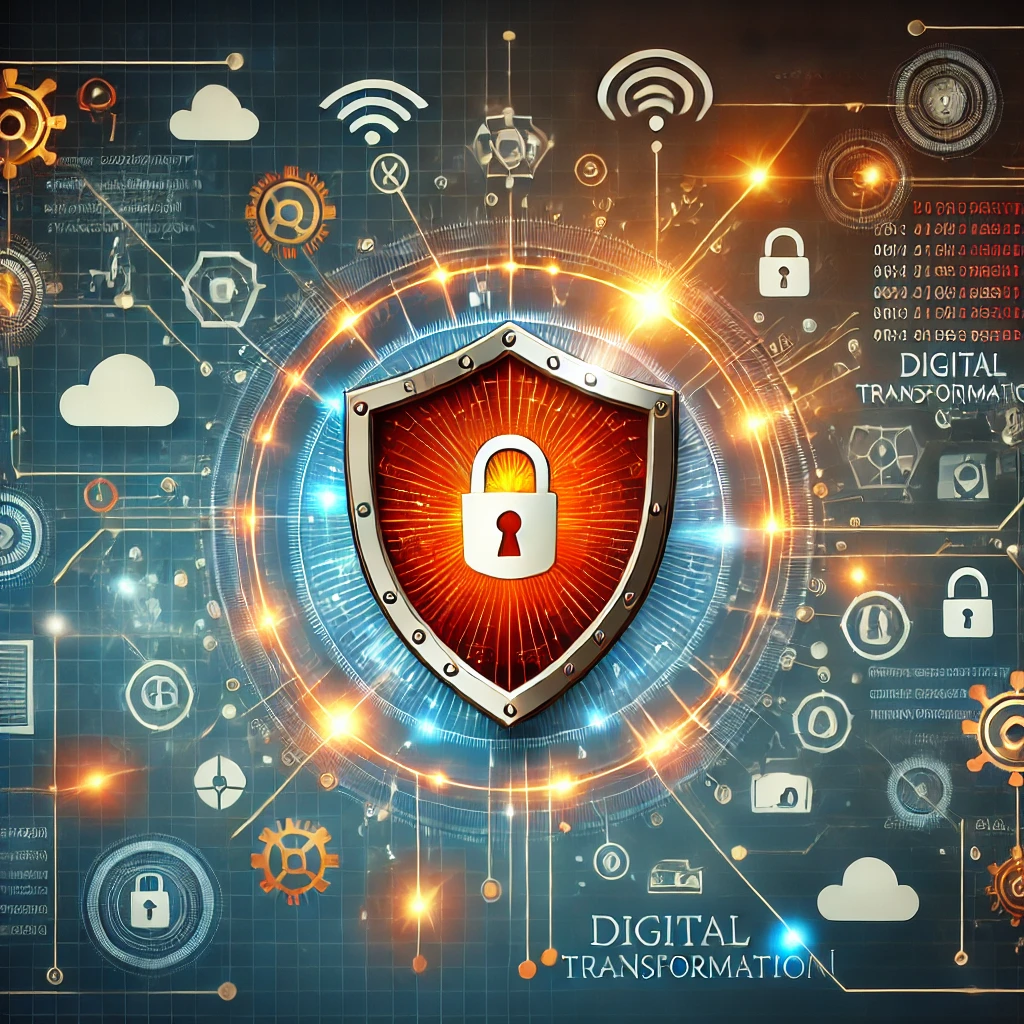The Role of Cybersecurity in Digital Transformation - Building, Buying, and Balancing Value vs. Cost

As organizations accelerate their digital transformation journeys, cybersecurity has moved from a supporting role to a critical pillar of success. Digital transformation initiatives can increase data exposure, expand attack surfaces, and amplify vulnerabilities in new technology stacks, all of which underscore the need for robust cybersecurity. A well-executed cybersecurity strategy not only protects against threats but also builds customer trust and regulatory compliance, supporting sustainable digital growth. In this post, we explore the cybersecurity capabilities needed for digital transformation, the debate between building versus buying solutions, and how to balance value and cost.
Core Cybersecurity Capabilities Essential for Digital Transformation
Before diving into how to source cybersecurity capabilities, let’s outline the key functions needed to secure a digitally transformed organization:
-
Identity and Access Management (IAM): Proper IAM controls access to digital resources through mechanisms like multi-factor authentication (MFA) and single sign-on (SSO), minimizing unauthorized access risks.
-
Threat Intelligence and Detection: With digital transformation, real-time threat detection, AI-based anomaly analysis, and actionable threat intelligence are essential to quickly identify and neutralize threats.
-
Cloud Security: Digital transformation often involves cloud migration. Cloud security includes secure configurations, data protection, and access controls to ensure that cloud infrastructure and applications remain secure.
-
Data Protection and Encryption: Encrypting sensitive data at rest and in transit is crucial, especially as digital transformation efforts involve collecting, storing, and processing more data than ever before.
-
Endpoint Security: Digital transformation increases reliance on mobile devices, IoT, and other endpoints, which can introduce security vulnerabilities. Endpoint security extends protection across all devices connected to the network.
-
Compliance and Risk Management: Ensuring regulatory compliance (e.g., GDPR, CCPA, APPI) is crucial to avoid fines and build trust with customers.
-
Incident Response and Recovery: In case of a security breach, a well-planned incident response and disaster recovery strategy are essential to minimize downtime and financial impact.
Building In-House vs. Buying Cybersecurity Solutions
When deciding between building in-house cybersecurity solutions or outsourcing, it’s essential to consider organizational needs, budget, and long-term goals.
Build In-House
Advantages:
- Customization: In-house solutions are highly tailored to an organization’s unique requirements, industry regulations, and architecture.
- Full Control: An in-house team offers complete control over cybersecurity data, practices, and responses.
- Scalable Expertise: Building in-house expertise allows the organization to adapt its cybersecurity posture proactively as digital initiatives expand.
Disadvantages:
- High Initial Investment: Establishing and maintaining in-house cybersecurity is resource-intensive, requiring significant budgets for hiring, training, and technology.
- Ongoing Training: Cybersecurity demands continuous education to stay ahead of emerging threats, a challenge in-house teams must prioritize.
- Slower Deployment: Developing capabilities in-house may take longer compared to ready-made solutions.
Best For: Larger companies with complex, industry-specific security needs, or those with regulatory or privacy requirements that necessitate close control over data and security processes.
Buy (Outsource)
Advantages:
- Rapid Deployment: Outsourced solutions can be implemented faster, meeting immediate security needs for organizations with limited time or in-house talent.
- Access to Advanced Technology: Vendors bring cutting-edge tools, threat intelligence, and expertise, often surpassing what an internal team could provide.
- Reduced Upfront Costs: SaaS or managed security services reduce the need for upfront infrastructure investments and lower initial setup costs.
Disadvantages:
- Less Customization: External solutions may be less tailored to an organization’s specific architecture or compliance requirements.
- Data Privacy Concerns: Outsourcing involves entrusting third parties with sensitive data, potentially increasing risk in areas like data residency and compliance.
- Integration Challenges: Integrating outsourced solutions with existing systems can be challenging, requiring compatibility with the organization’s tech stack and processes.
Best For: Smaller organizations or those needing rapid implementation of advanced cybersecurity capabilities without substantial in-house resources.
Value vs. Cost: What’s the Right Approach?
Digital transformation demands that cybersecurity be viewed not as a mere line item but as a strategic asset that enhances value.
The Value Approach: Cybersecurity as an Investment
Organizations that prioritize value in cybersecurity understand it as an essential investment that supports digital transformation. This approach emphasizes building customer trust, securing intellectual property, and ensuring uninterrupted service—all of which contribute to a competitive advantage.
- Long-Term Benefits: By focusing on long-term value, organizations gain greater agility, enhanced brand reputation, and improved operational resilience.
- Proactive Measures: A value-focused approach enables continuous investment in threat detection, incident response, and compliance, protecting the organization from costly breaches and compliance issues.
The Cost Approach: Cybersecurity as an Expense
The cost-focused mindset prioritizes minimizing cybersecurity spend, focusing on compliance at the minimum level required to avoid fines and sanctions. While this approach reduces initial expenses, it often results in reactive cybersecurity measures that may not fully protect against sophisticated attacks.
- Risks of Cost-Cutting: A purely cost-based approach can lead to gaps in threat detection, incident response delays, and brand damage in case of a breach.
- Short-Term View: Organizations focusing solely on cost might miss out on opportunities to build a strong security foundation, leading to higher expenses when breaches occur.
Conclusion
For successful digital transformation, cybersecurity capabilities are indispensable. The decision to build in-house or buy outsourced solutions depends on factors like organizational size, budget, and specific security needs. Large organizations with custom needs may benefit from in-house solutions, while smaller firms or those seeking quick deployment may prefer outsourcing.
Ultimately, viewing cybersecurity as an investment rather than a cost yields greater long-term value. A proactive, value-driven approach to cybersecurity supports a sustainable digital transformation journey, empowering organizations to innovate securely, build customer trust, and maintain regulatory compliance. Balancing between building or buying, and focusing on value over cost, lays a strong foundation for cybersecurity in an ever-evolving digital landscape.